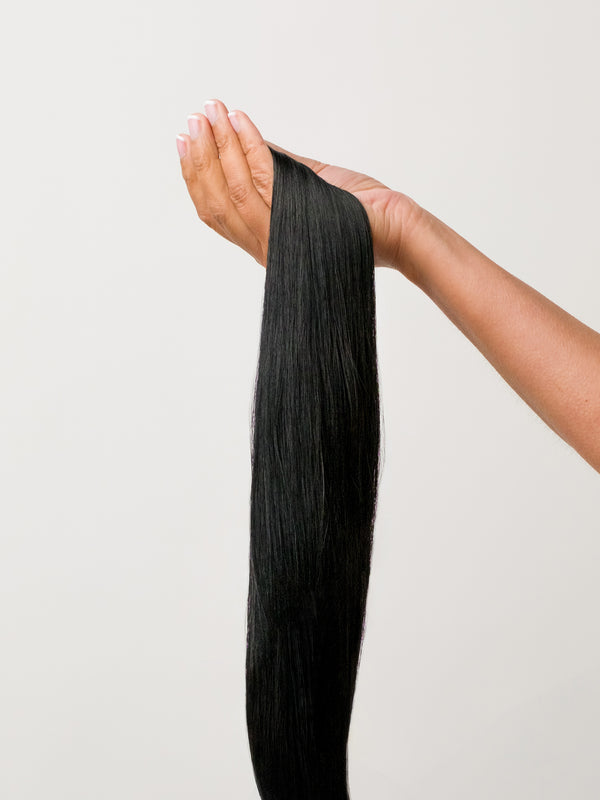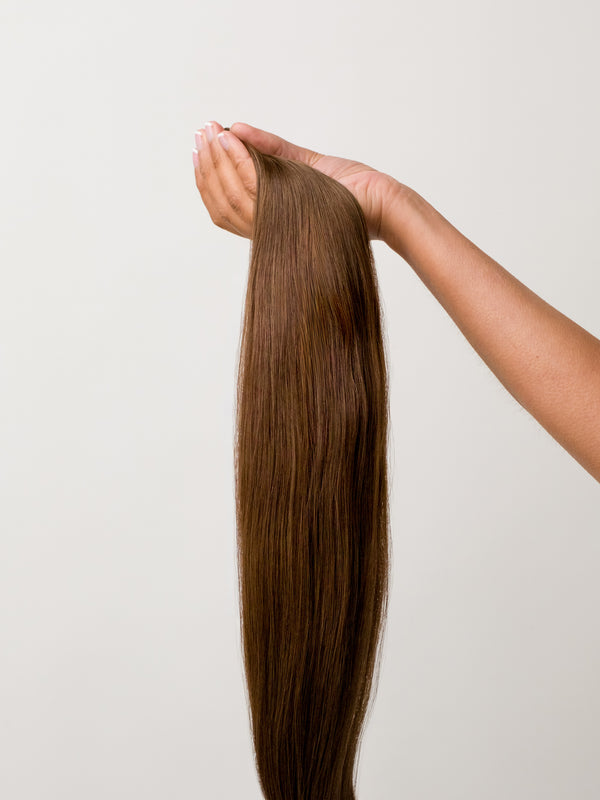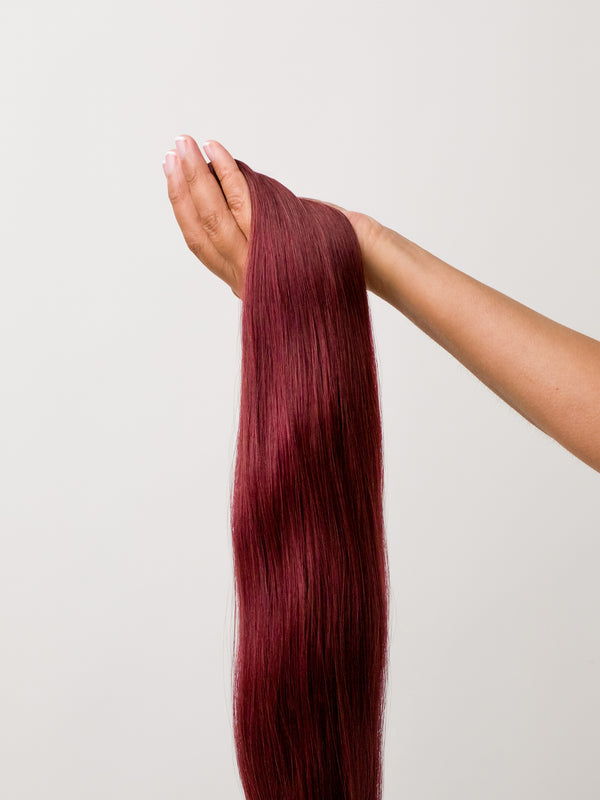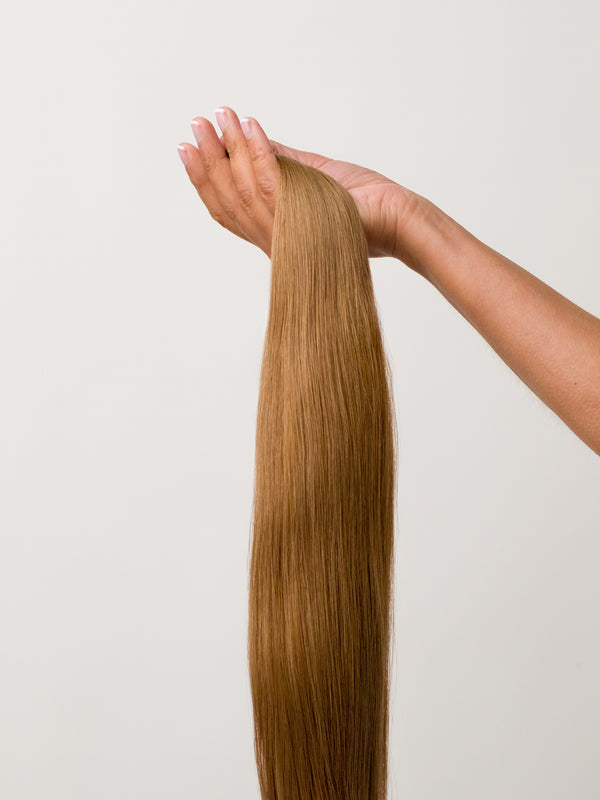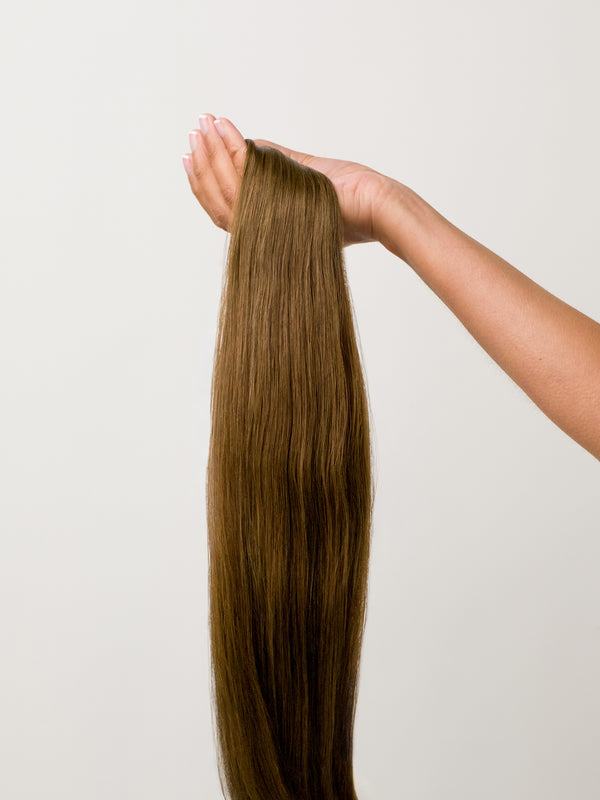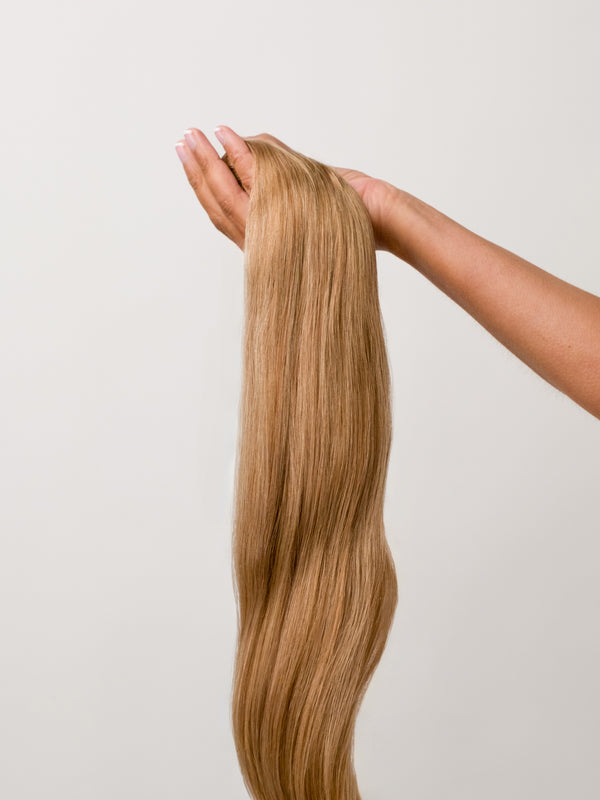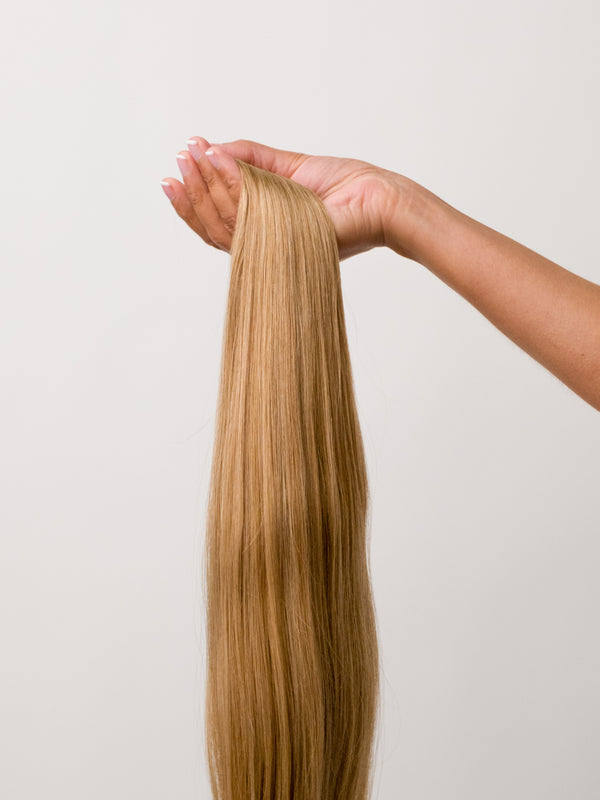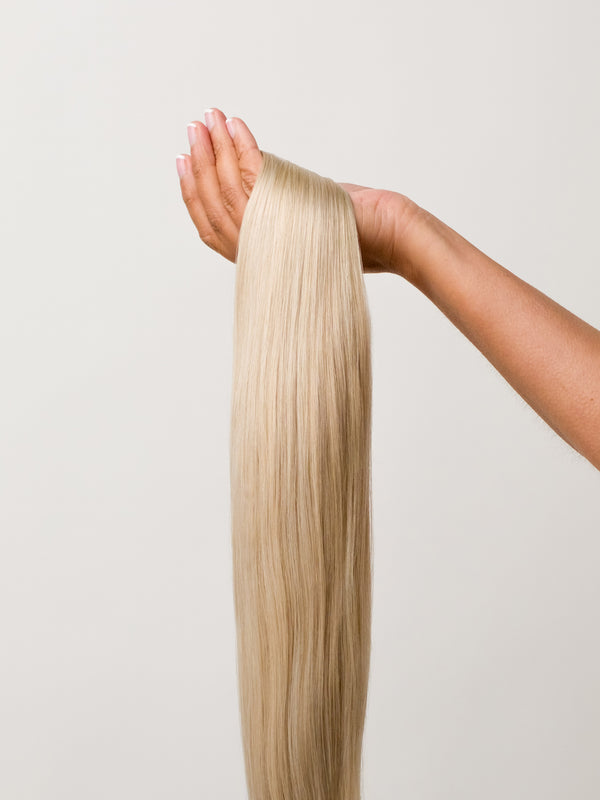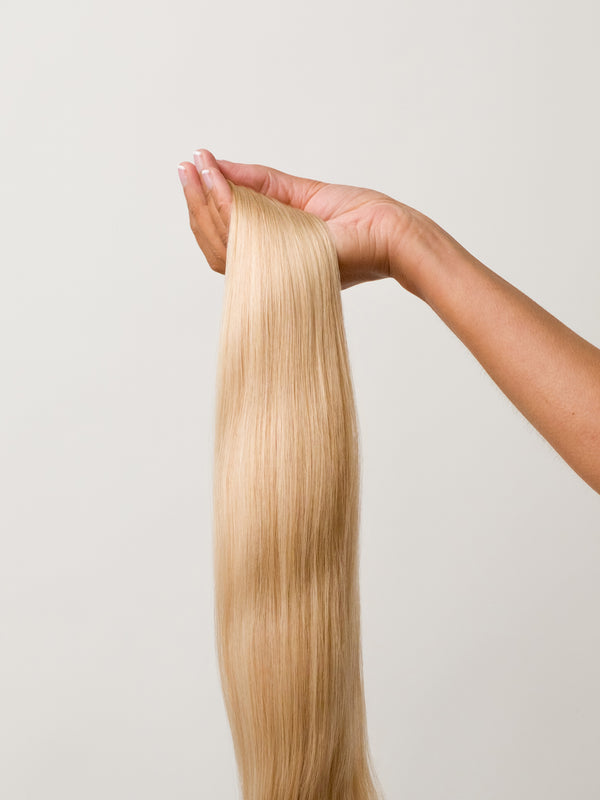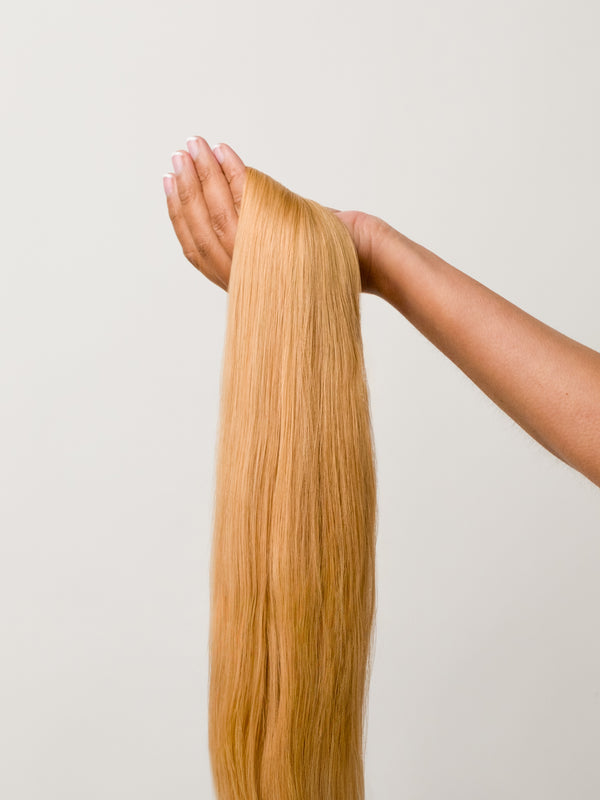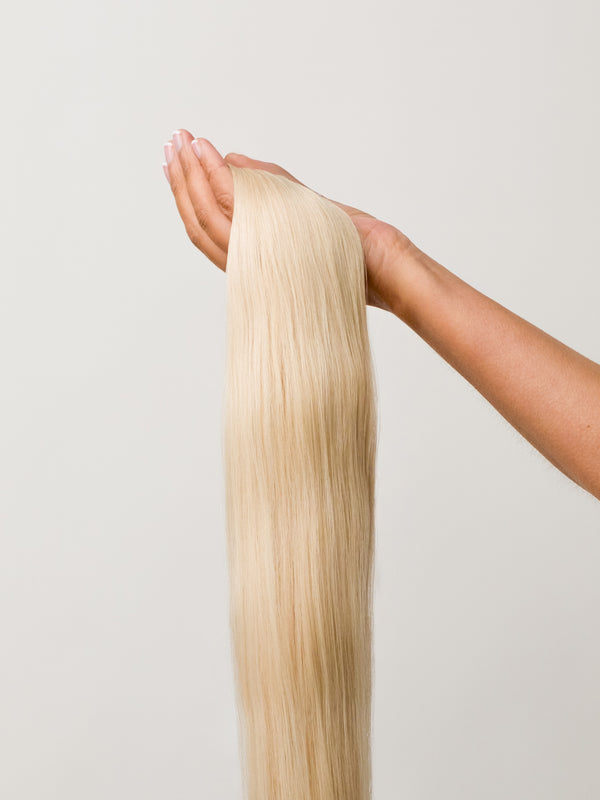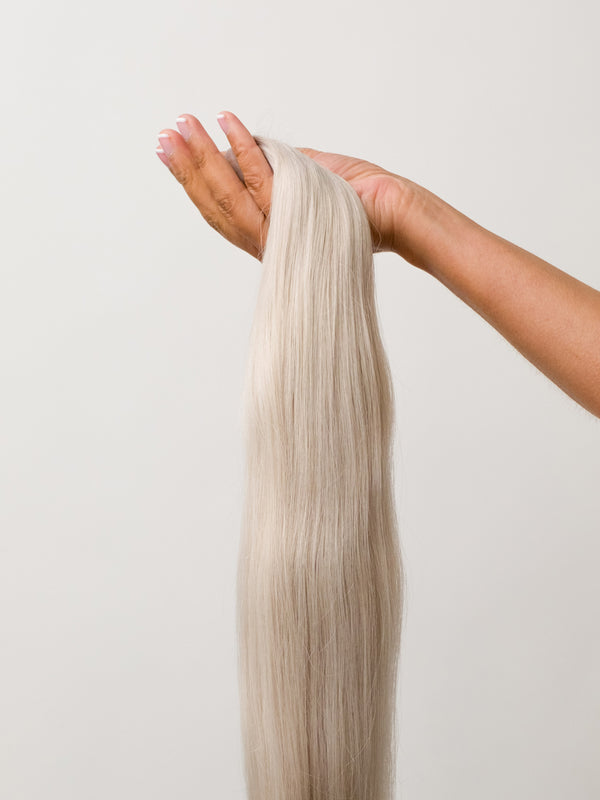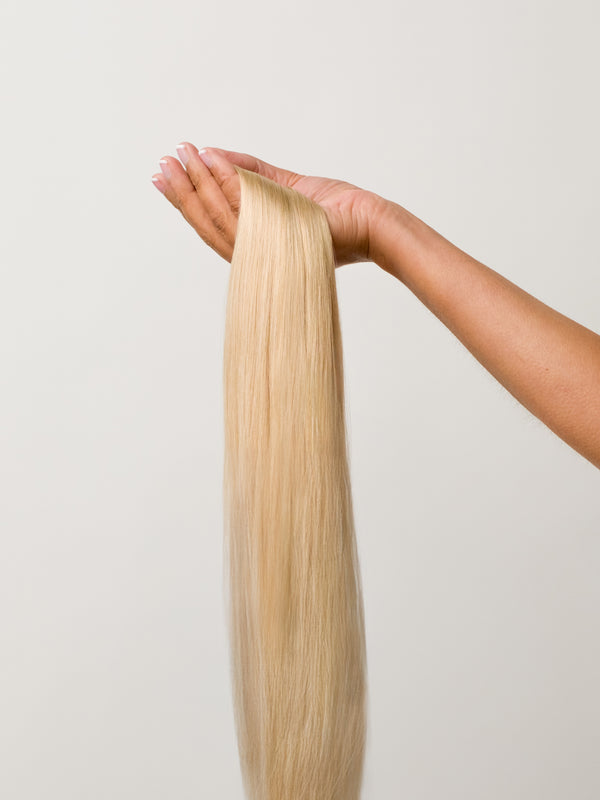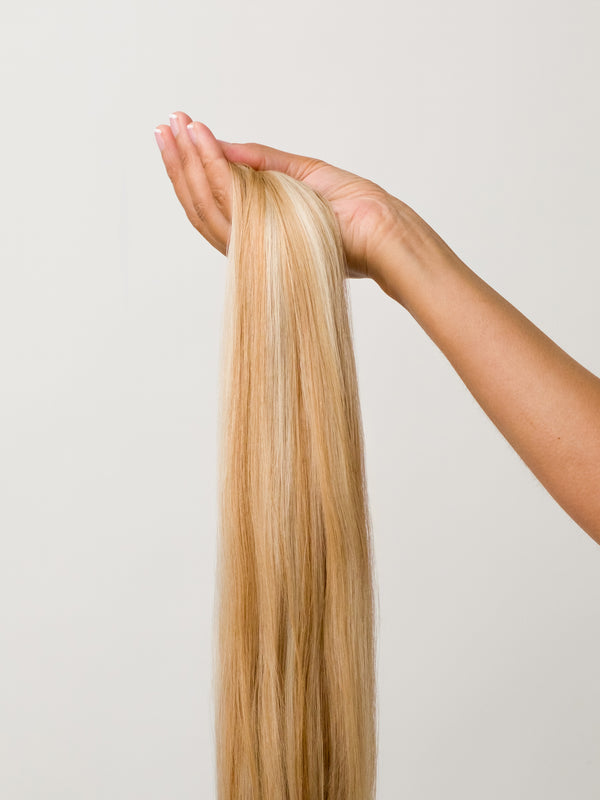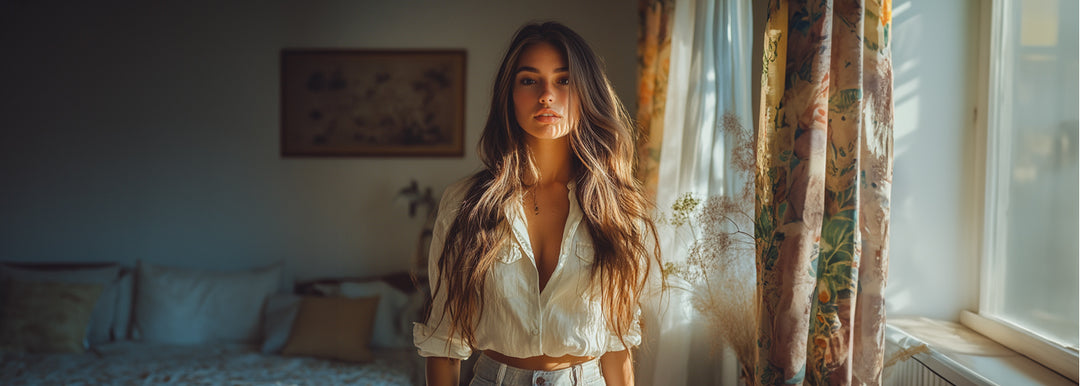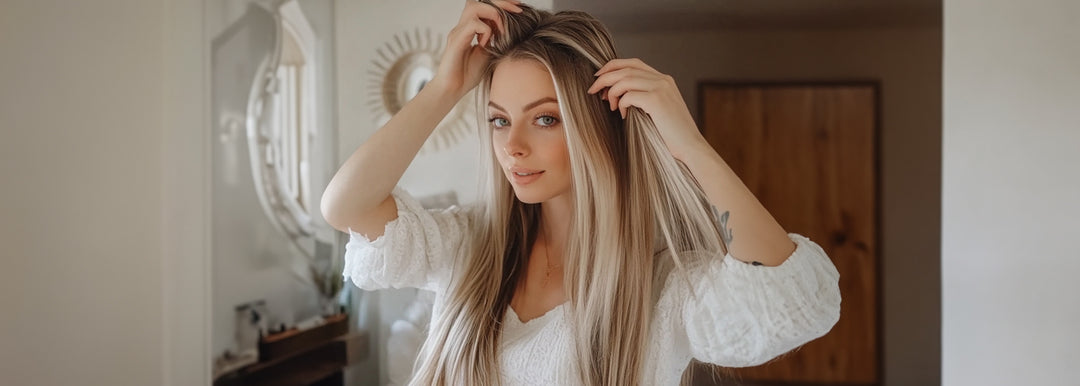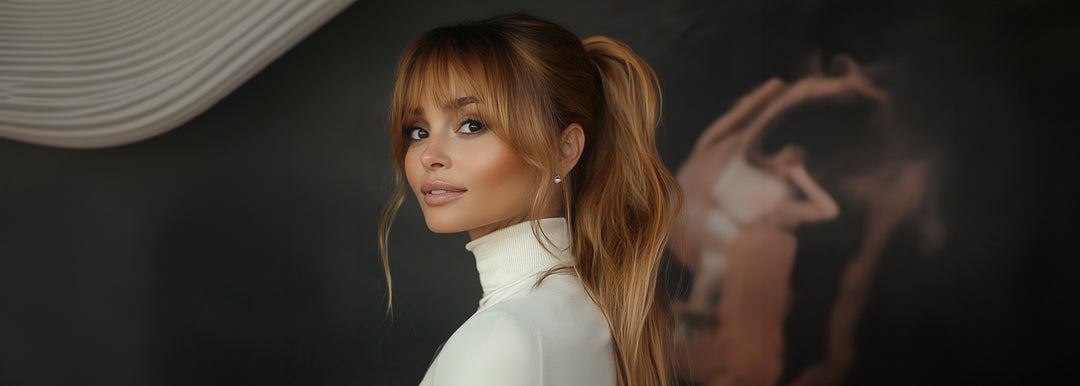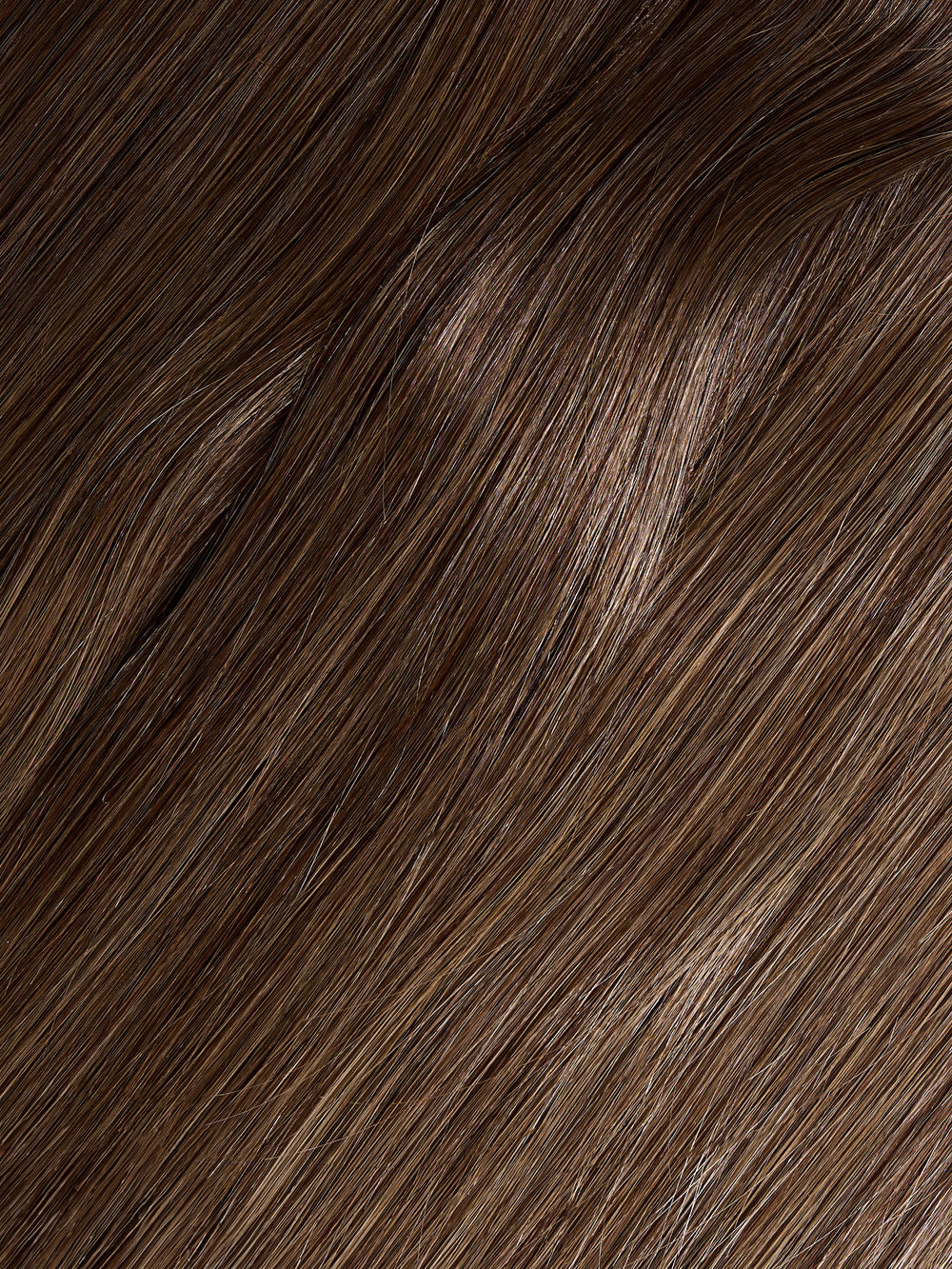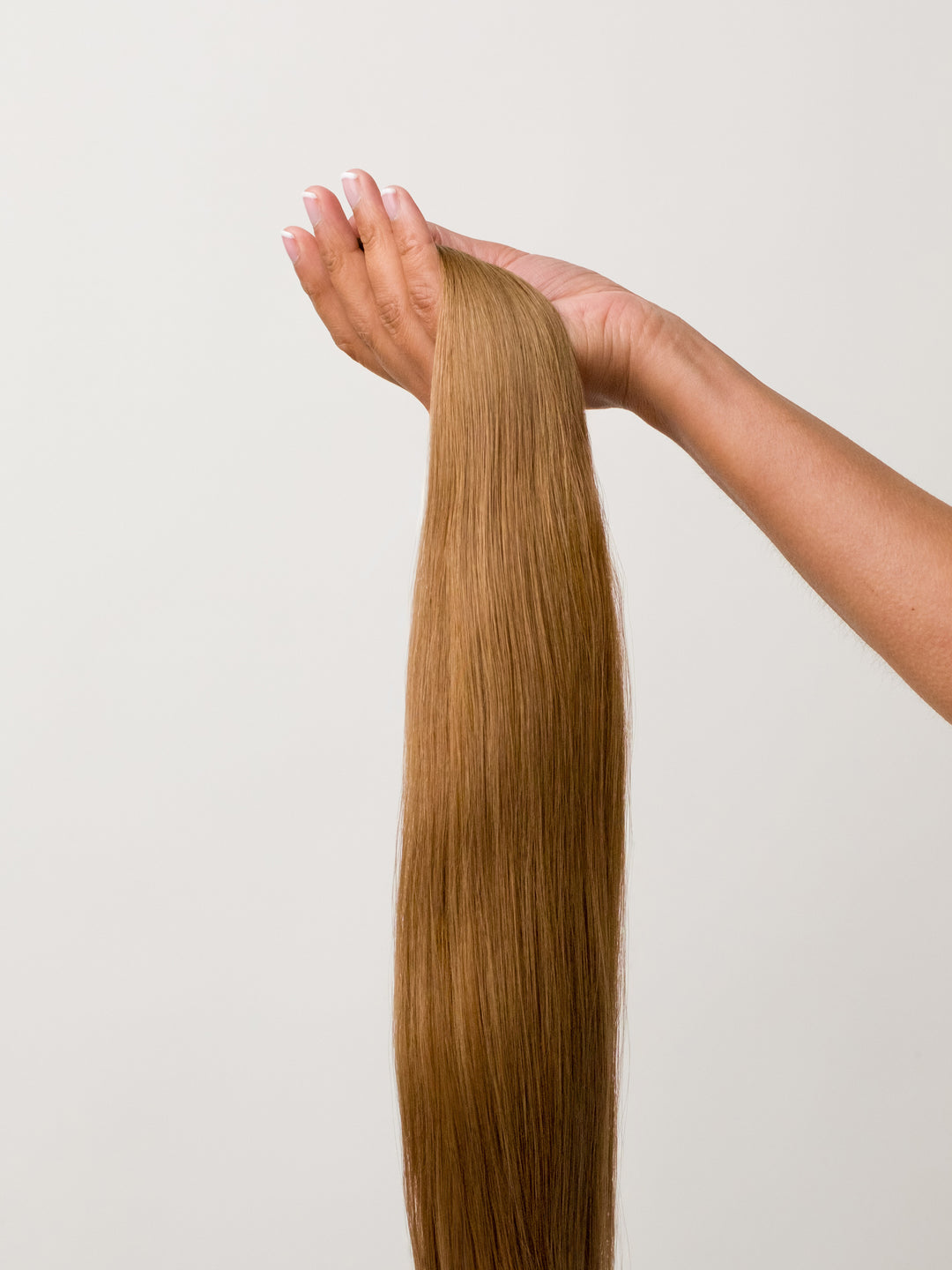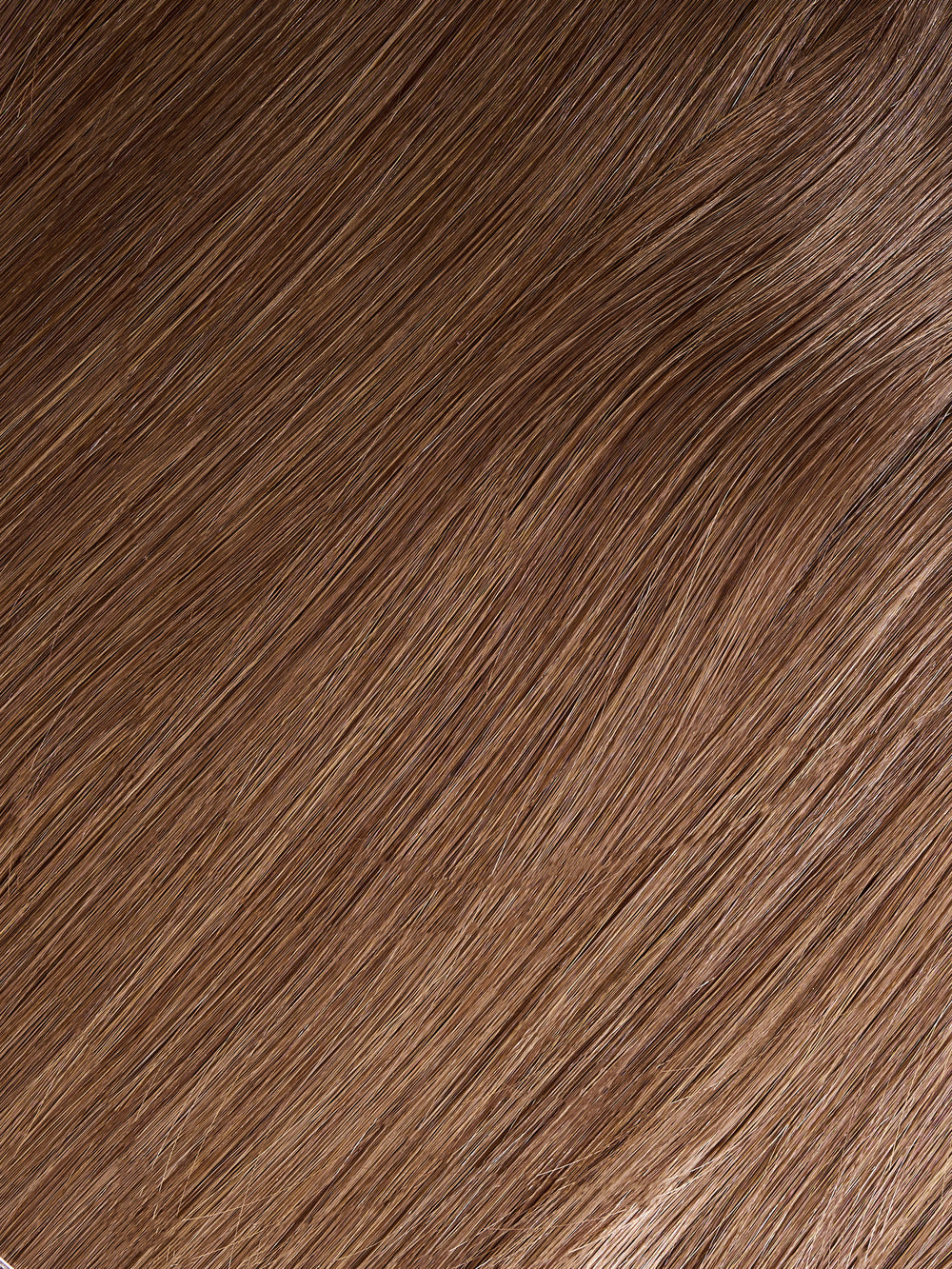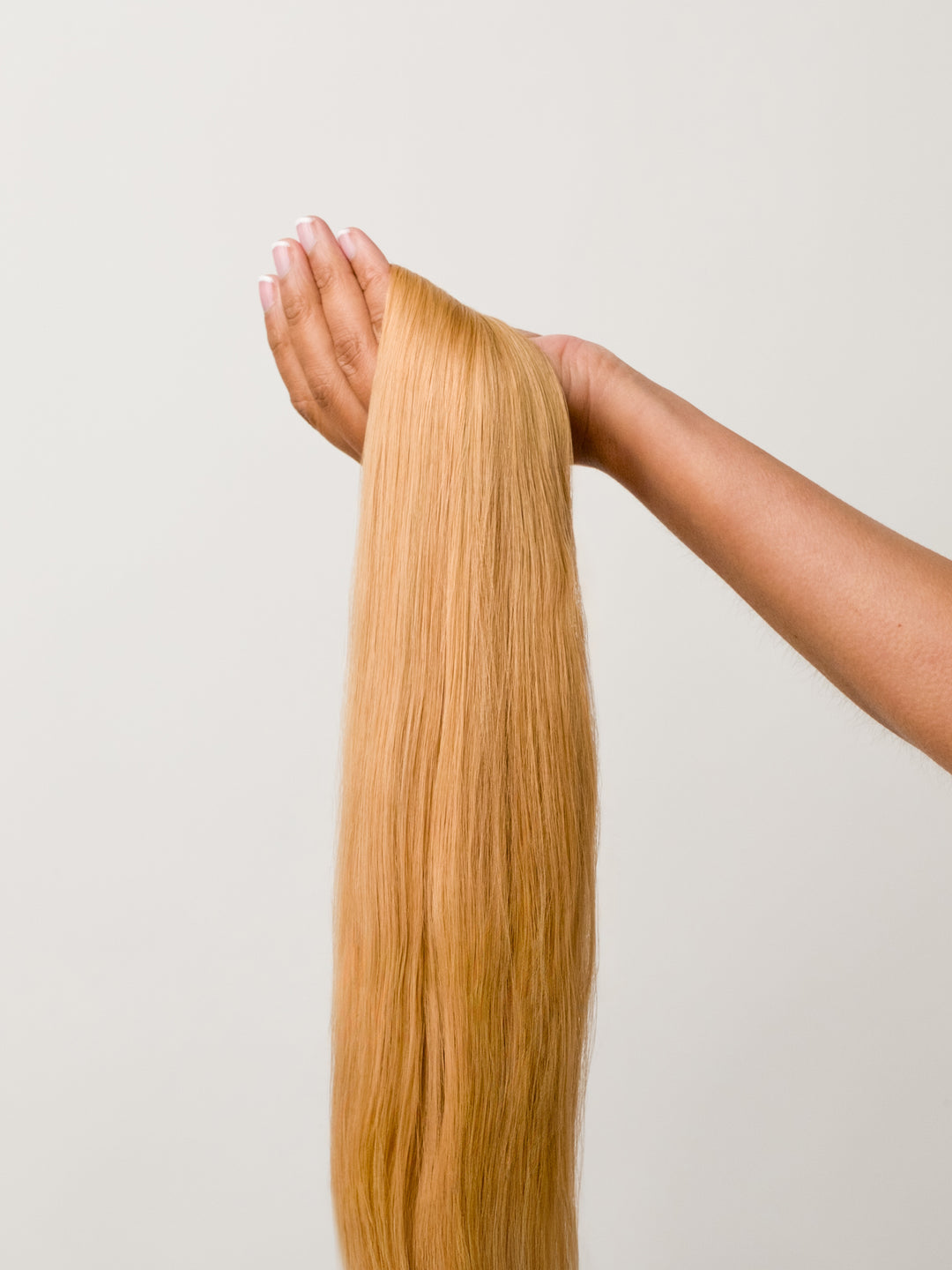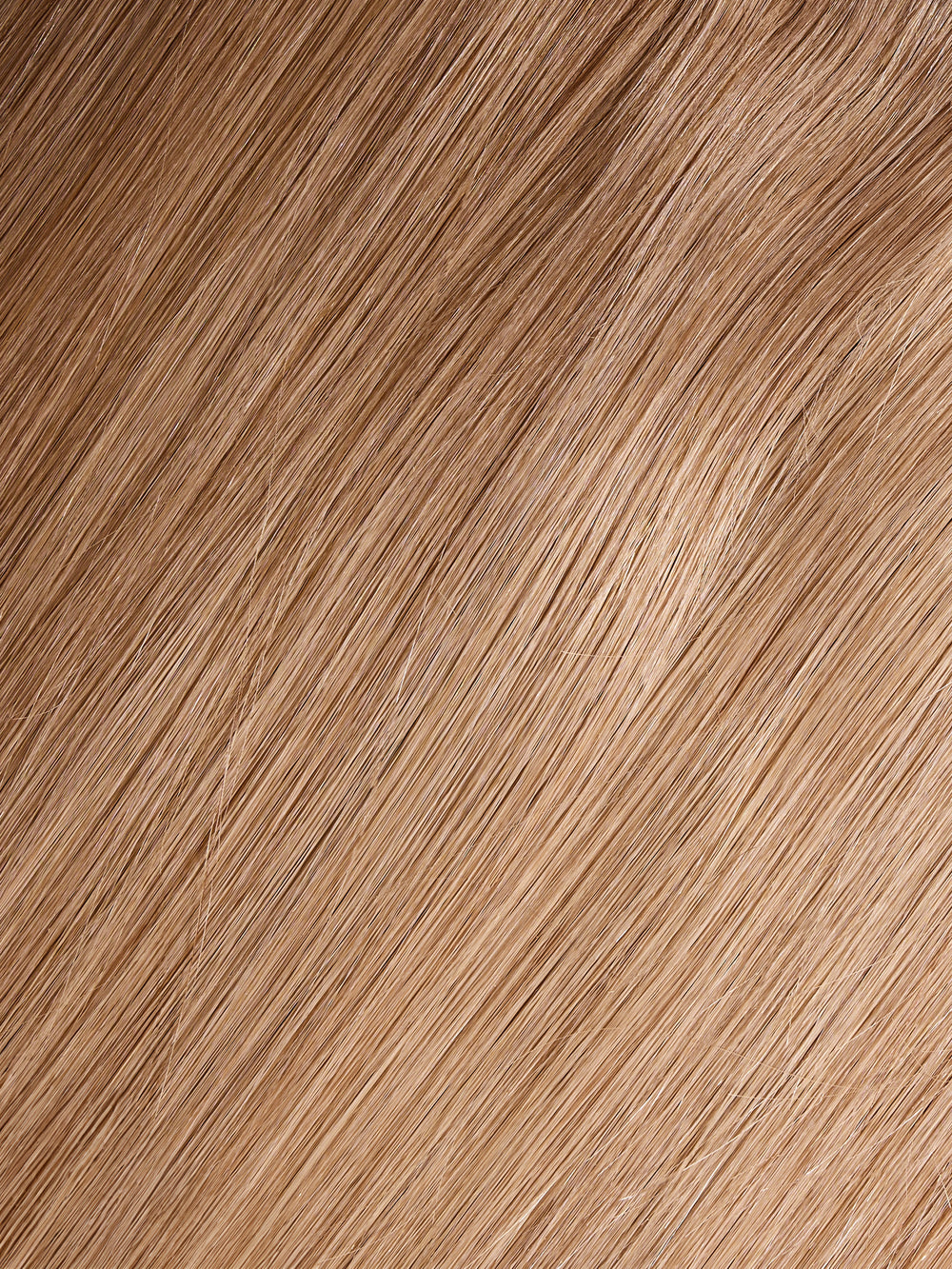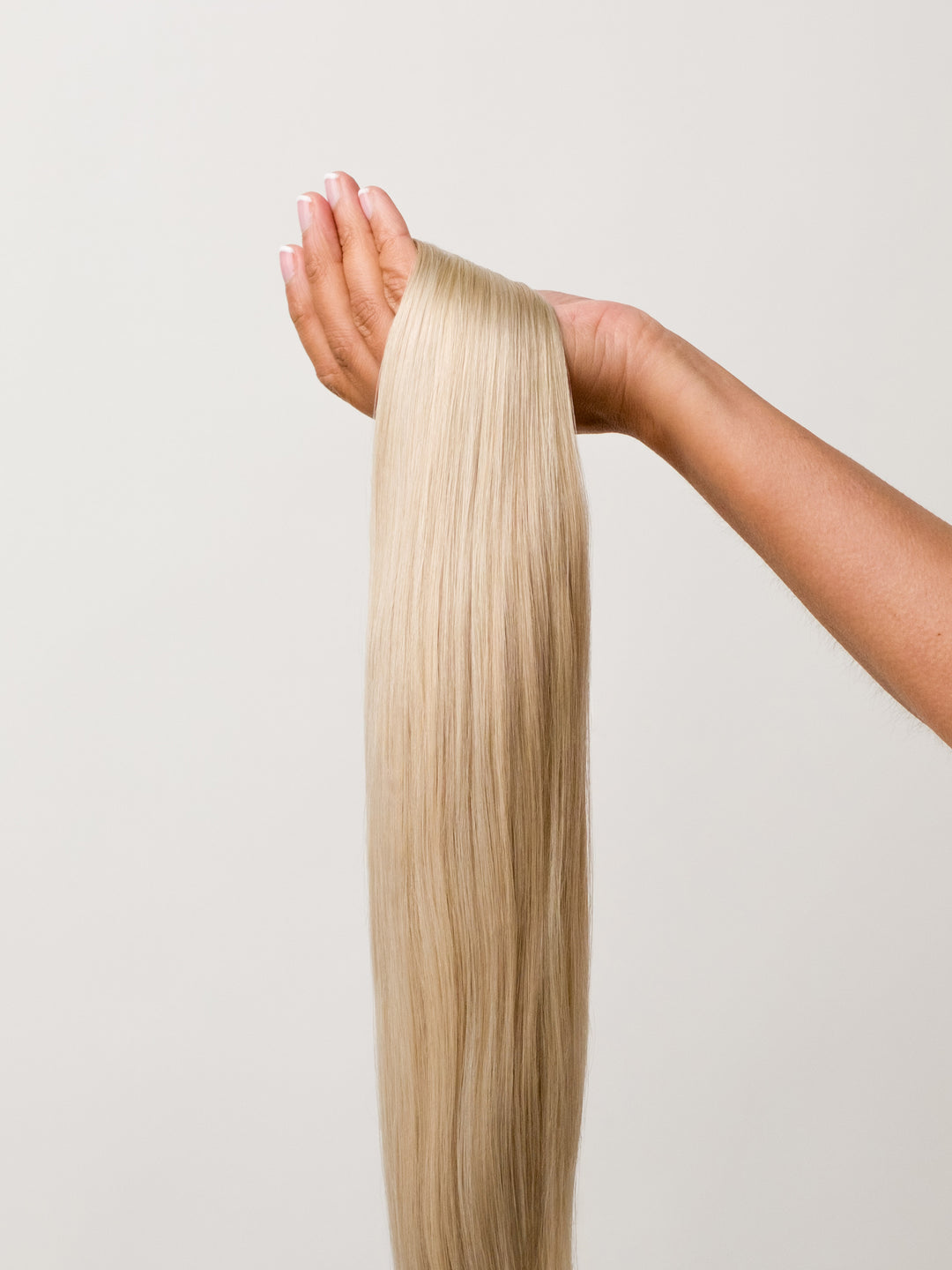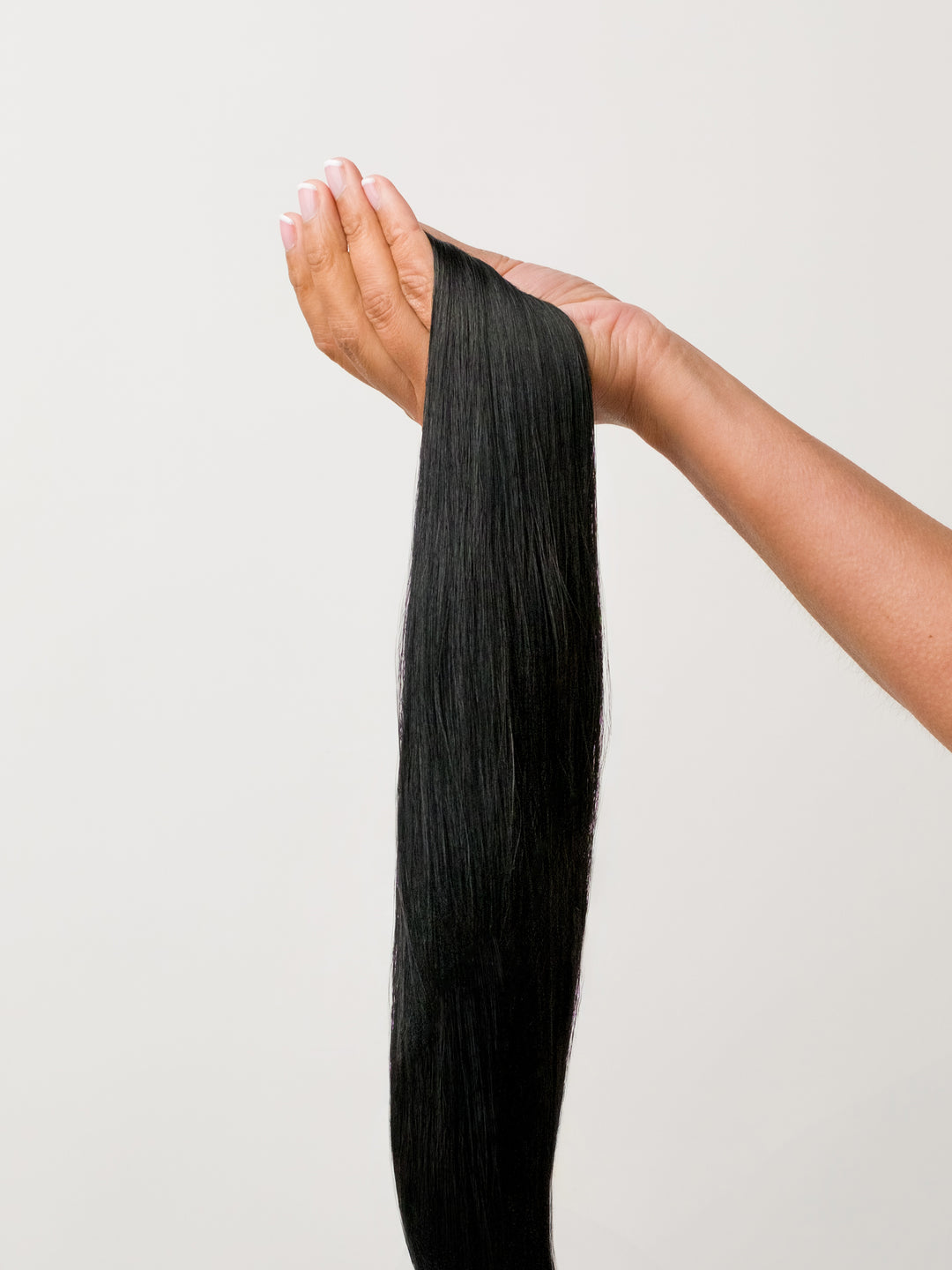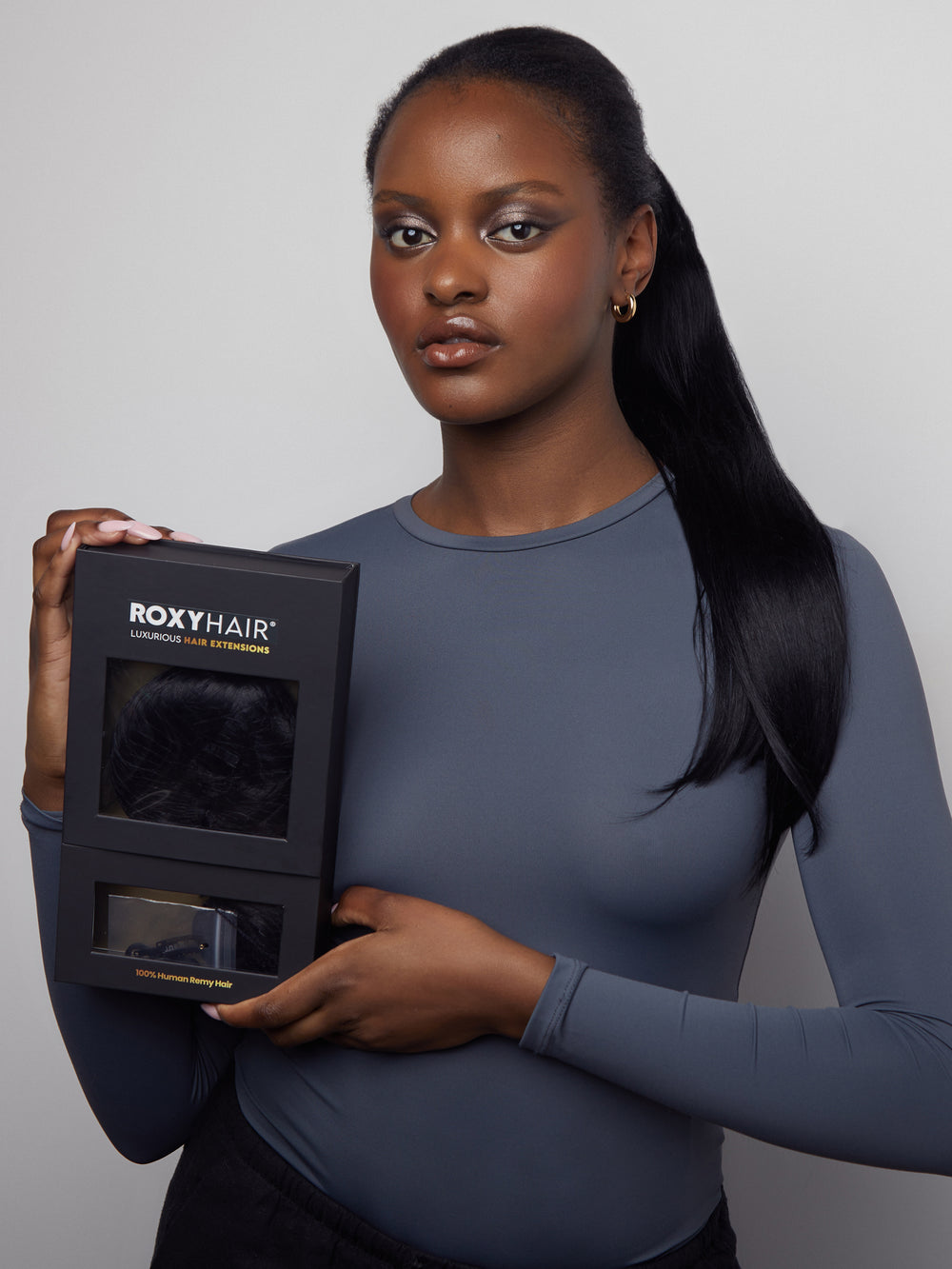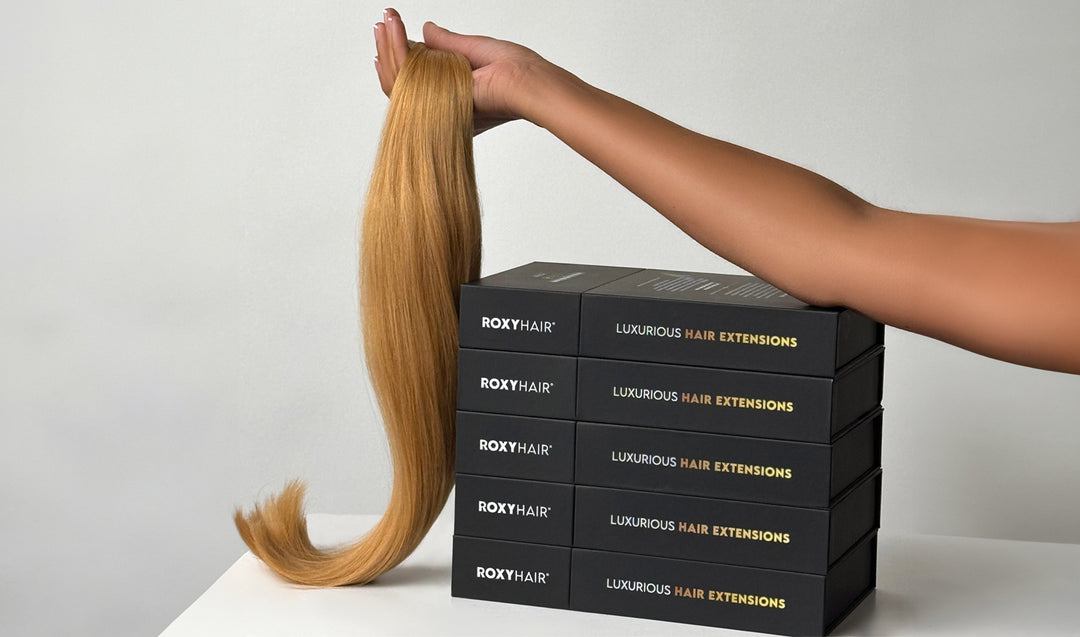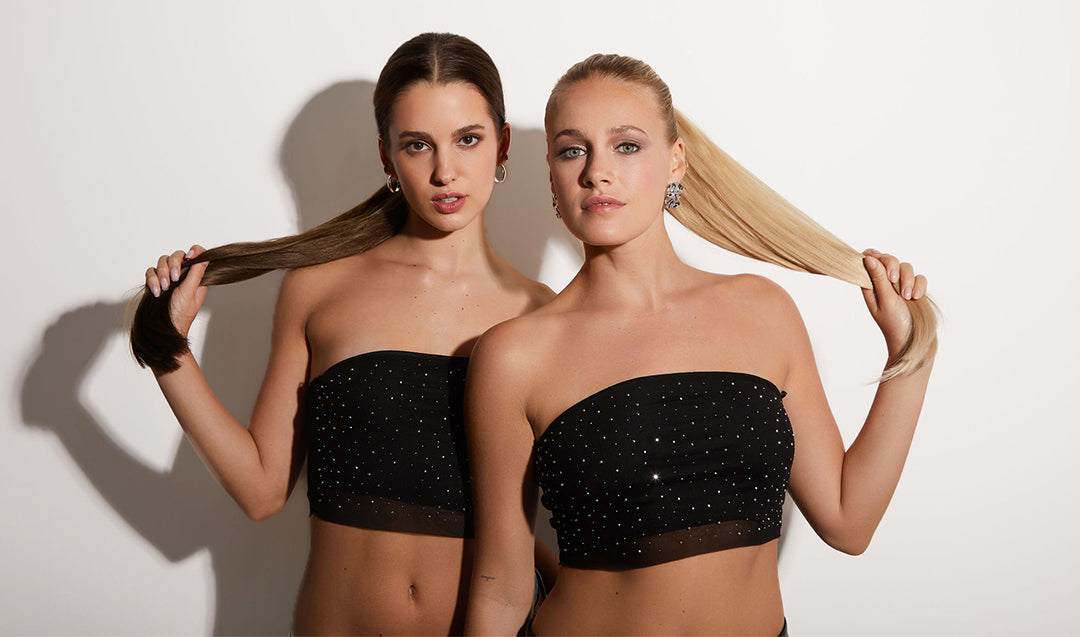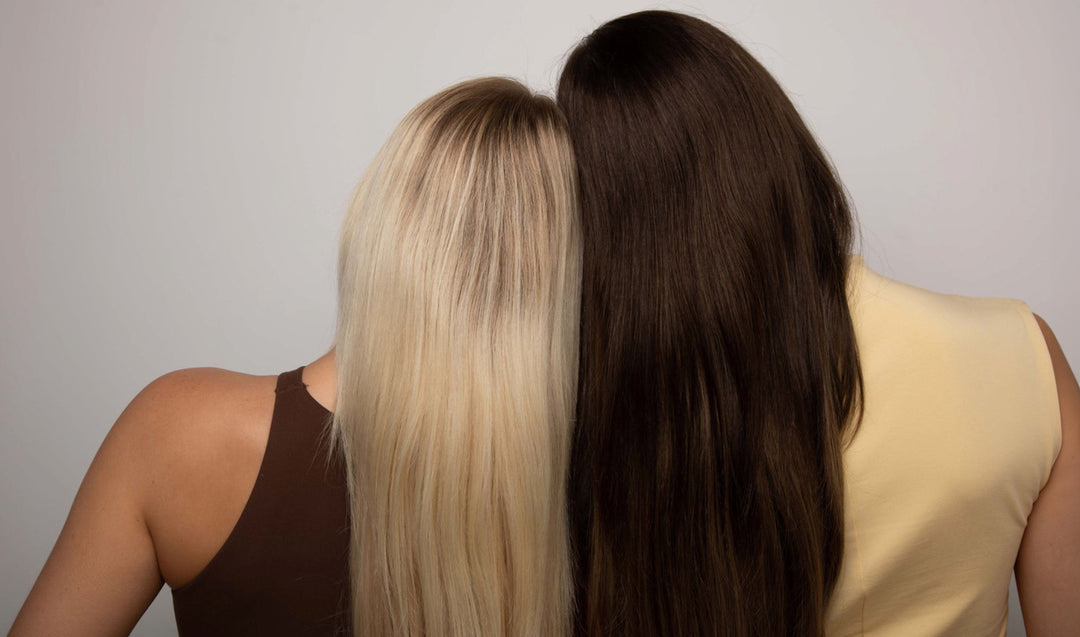Picking the right length for your hair extensions is super important - it can totally change up your whole look and how the extensions feel.
We're going to break it all down for you so you can choose what's best for your hair. We've got all sorts of different length options in our online store. We'll fill you in on how to select the perfect length for your specific hair situation.
Along the way, we'll share some handy little tips to make sure you nail this hair extension decision. Let's go!
Key Takeaways
-
Don't go shorter than the minimum length for your extension type or you risk damaging those locks.
-
For thin/fine hair, stick to shorter extensions around 16-18 inches max.
-
For thick hair, wefted extensions up to 22 inches can blend seamlessly. Want dramatic length? Go for 20+ inch extensions if your hair can handle it.
-
You gotta prep your hair right - get those trims, deep condition, and lay off the hot tools for gorgeous extension results.
Minimum Hair Length Requirements
Meeting those minimum hair lengths is super important. If you don't have the required length, other options should be explored to avoid damage.
-
For clip-in extensions, you'll want your natural hair to be at least 14 inches or shoulder-length. Anything shorter than that and those clip-ins ain't gonna work.
-
Now tape-ins and wefted extensions, those need your hair to be at least 8 inches long. We're talking chin-length or longer.
-
But get this - fusion or track weft extensions only require like an inch of hair. You could practically be bald and still rock those.
-
If you're looking at stick-on or glue-in extensions though, you'll need that 14 inch minimum again, just like the clip-ins.
Here's an important tip though - the thickness and your natural hair length matters too. If you have thicker hair, wefted extensions are your bestie. But stick-ons or clip-ins like Roxy Hair can work with all sorts of hair types and textures.
Hair Length by Extension Type
When it comes to hair extensions, the length you choose really depends on how they are going to be attached to your natural hair. Let us break it down for you:
For extensions that get bonded or clamped to your own hair strands, like keratin bonds or micro-ring extensions, longer extensions can put a lot of extra weight and strain on your hair, especially if your hair is thin or fine. So for those types, extensions around 16-22 inches (40-55 cm) are usually a good middle ground - long enough to get that luxurious look, but not so long that they'll pull too much on your hair.
For wefted extensions that get sewn or taped in, like sew-ins or tape-ins, a similar mid-length range of 14-20 inches (35-50 cm) tends to work well and isn't too bulky or hard to style.
Now clip-in extensions are a bit different since the wefts are65 usually pretty thick. With those, you might find shorter lengths like 14-18 inches (35-45 cm) are more comfortable for everyday wear.
The main thing is finding a length that gives you the look you want without stressing out your natural hair or being a pain to work with.
Measuring Your Hair Length
Measuring your hair length correctly is key for new styles or extensions.
-
First, make sure it's dry and detangled. Stand up straight, then use a ruler or tape measure. For curly or wavy hair, gently pull it straight to get the full length.
-
Now, where do you start measuring from? The nape of the neck is the most common starting point for overall length. Tilt your head forward slightly, brush your hair down, and measure from the base of your hairline to the ends.
-
If you want to know the length at your ears for layered styles, measure from the top of your earlobe straight down. For updos or styles that gather hair at the crown, part your hair in the center and measure from the crown down.
-
For bangs or fringe, start measuring from the center of your forehead down to the ends.
-
For curly or wavy hair, gently pull a section straight and measure, or measure the stretched length of a small section to estimate the overall length.
-
If you have thick hair, separate a small section to measure to avoid the bulk affecting the accuracy.
Factors Affecting Ideal Length
When it comes to how to install hair extensions, choosing the right extension length isn't just about looks
Hair Texture:
If you have fine or thin hair, long and heavy extensions can be a recipe for disaster. The extra weight can cause breakage and make your hair look limp. Opt for shorter hair extensions fitted, around shoulder-length or up to 18 inches, to add volume without compromising your hair's health.
Those with thicker or coarser hair strands can handle longer extensions better. You can go for lengths up to 22 inches or even longer for a dramatic impact. However, very long hair extensions might require more effort to style and blend seamlessly with your natural hair texture.
Hair Density:
Just like fine hair, low-density locks might not vibe with super long extensions either. Stick to around 14-18 inches and you'll get that added volume without your hair feeling weighed down.
But if you've been blessed with thick, full strands, girl, you can rock those longer 22+ inch extensions no problem. Just go with whatever length gives you your dream look while still feeling comfy.
Desired Length:
Shoulder-length extensions are your go-to for most hair types. But if you're craving those long, flowy mermaid waves, 20+ inch extensions are where it's at. Just make sure your hair can actually handle that much length based on your texture and thickness.
Shop Roxy Hair
Here's a quick cheat sheet to get you started with right hair extensions:
|
Hair Texture / Density
|
Desired Length
|
|
Fine / Thin Hair
|
Subtle Change
|
|
Fine / Thin Hair
|
Dramatic Change
|
|
Thick/Coarse Hair
|
Subtle Change
|
|
Thick/Coarse Hair
|
Dramatic Change
|
|
Low Density Hair
|
Any
|
|
High Density Hair
|
Subtle Change
|
|
High Density Hair
|
Dramatic Change
|
Preparing Your Natural Hair for Hair Extension
Having healthy hair is so important if you want those extensions to look fantastic. Here's the lowdown on prepping your locks for some gorgeous new length:
Proper prep is the answer for gorgeous results when wearing hair extensions. A few weeks out, deep condition to strengthen those strands. And hold off on heat styling for at least a week - too much can make your hair prone to damage and breakage when the extensions go in.
Nourish from the inside with a balanced diet and tons of water to keep your hair healthy and hydrated.
Get a trim to remove any split ends before your appointment - those little frays can cause major breakage when combined with extension weight.
Talk to your stylist about blunt or layered ends. Blunt is usually best, but layers may need special extension techniques.
Your current length matters too. If it's chin or shorter, micro-rings or keratin bonds could work well. Shoulder to mid-back? You've got options like clip-ins or sew-ins. Already super long? Make sure your hair can handle even more length.
Use a clarifying shampoo the day before and show up with clean, brushed hair. And most importantly, have an open convo with your stylist about your desired look.
Roxy Hair has a great guide on properly prepping your hair before getting extensions. Check it out.
Risks of Hair Extensions on Short Hair
For Very Short Hair (above shoulders):
-
Extremely high risk of stress and tension on hair follicles
-
Very limited application methods available
-
Extra weight can cause discomfort and scalp irritation
-
Difficulty blending extensions for a natural look
For Short Hair (shoulder-length):
-
Increased strain on hair follicles
-
Fewer application technique options
-
Potential for extensions to feel too heavy
-
Challenges blending extensions seamlessly
General Risks:
-
Traction alopecia (hair loss from pulling/tension)
-
Limited styling versatility
-
Unnatural look if not applied correctly
-
Expensive maintenance requirements
Alternatives for Short Hair
Rather than risk damaging your strands, you may want to just wait a few months and let your very short hair grow out a bit before trying extensions. Clip-ins are also a lower-risk option to add temporary length and volume until your hair cooperates.
Summary
At the end of the day, picking the right extension length comes down to your hair type and the vibe you want. If your hair is shorter,you gotta be careful with adding too much weight. But with the right application and length for your texture, you can totally transform your look without wrecking your strands.
Frequently Asked Questions (FAQs)
What's the minimum hair length for clip-in extensions?
Around 14 inches or shoulder-length minimum.
Can I get extensions if I have really short or thin hair?
It's risky with very short or fine hair. Better to grow it out first or try Roxy Hair clip-ins.
How do I measure my hair length correctly?
Stand straight, tilt head forward slightly, measure nape of neck to ends.
What length extensions should I get for a dramatic look?
Go for 20-22 inches for long, flowy locks if your hair can handle it.
Can I still get my hair colored or chemically treated with extensions?
Best to avoid harsh chemical treatments or excess heat styling with extensions.





